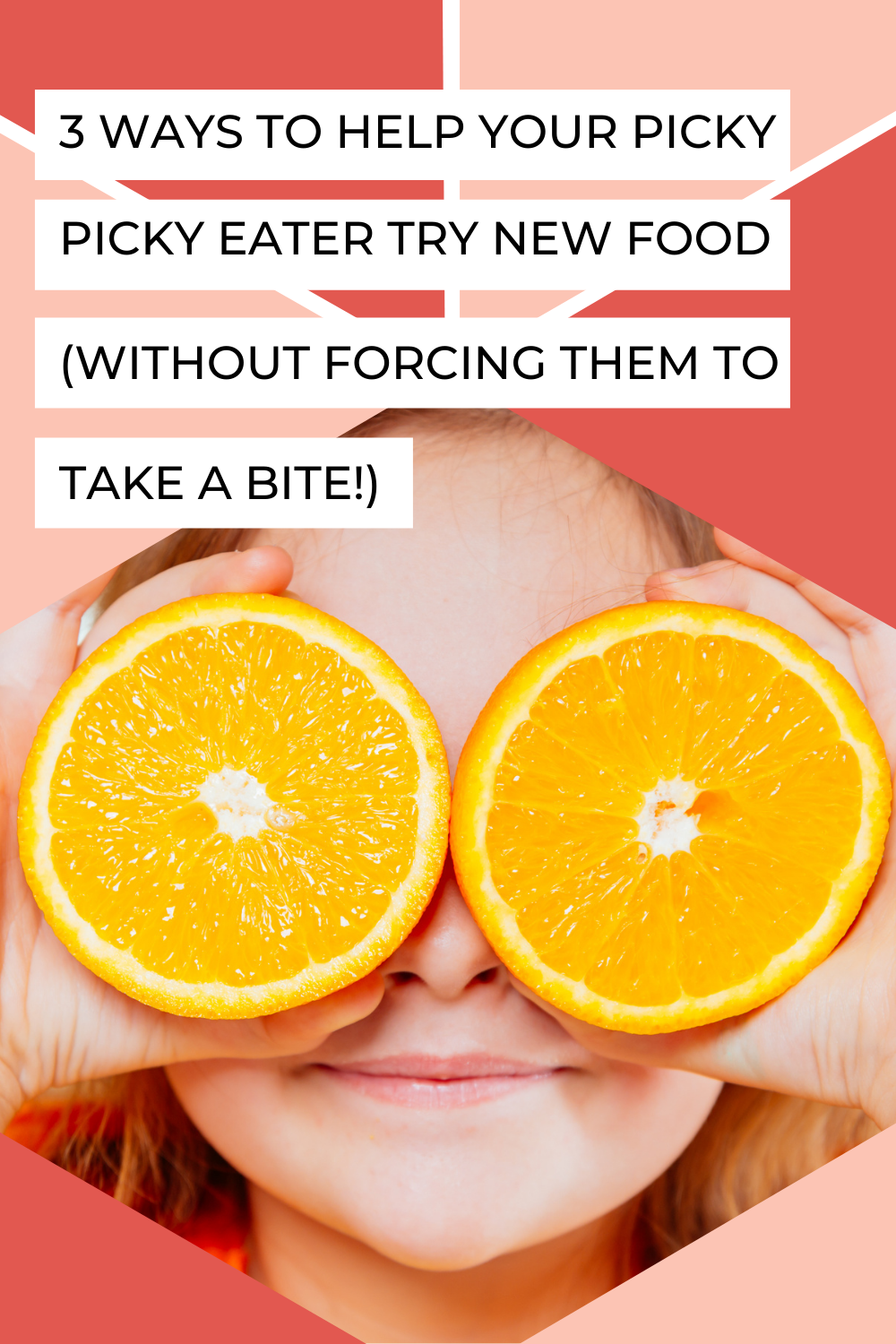
Kids with autism are known to have more food neophobia (fear of newness) than kids who are not on the spectrum. So many parents ask me how can I introduce new foods to my kid? I hear very often that kids refuse new foods or can’t even tolerate having new foods on their plates without a meltdown.
So what’s a parent to do? How can you get your child with autism to eat new foods?
How To Get Your Child With Autism to Eat New Foods
One of the best ways to help your child with autism eat new foods is to make new foods less new. When you make new foods more familiar you are reducing the chance of neophobia and increasing the chance that your child will eat.
So then, the question is, how can you help make new food feel more familiar?
Frequent and repeated exposures to new foods is really helpful way to decrease food anxiety and increase the familiarity of foods.
Many kids need multiple (I’m talking over a dozen) exposures – that’s any encounter at or away from the table – to new foods before feeling ready to try eating them
The more times your child “meets” a new food, the less new and strange it is. The more comfortable and familiar a food feels, the more likely your skeptical eater is to eat it.
Food Servings vs Food Exposures
It’s important to distinguish between a full serving and a gentle exposure.
Servings are age-appropriate portions. They are what you provide your child at meals with the intention of meeting her nutrient needs and helping her feel full at the end of a meal.
Exposures on the other hand can and should be small. Any encounter with a new food can count as a food exposure. Exposures can be food play, cooking, grocery shopping, gardening, and having a small portion of the food on the table or on their plate.
Offering a full serving size of a new food for the very first time can feel scary for your child. Full portions of new foods can feel too big and intimidating. Even if you tell kids that they don’t need to eat, they often sense that they need to eat all of what is on their plate and can’t imagine how to approach a large portion of something new.
A small exposure is less threatening than a full serving. The small introduction feels like it’s just a chance to get to know a food.
What A Food Exposure Looks Like
Sometimes smaller is better! New food exposures can actually be as small as a crumb or the size of a pea.
A small portion is more approachable for kids. It doesn’t dominate a plate (so it’s easy to ignore or move) and if your child does decide to eat, lick, or even just smell the food exposure, it’s a manageable task.
For your, the benefit of serving very small exposure means you’re wasting less food and spending less time preparing food.
Recap
Offering small food exposures is a good way to get autistic kids to eat new foods. Small food exposures are less threatening to kids who don’t eat new foods and dislike having them on their plate. Food exposures are opportunities to desensitize your child and help him or her feel more comfortable eating something new. Food exposures are smaller than typical food servings and aren’t always offered with the intent of eating.
Homework
Is there a new food you’re trying to introduce to your selective eater with autism? Try offering multiple small food exposures during and outside of mealtimes. Make sure the portion is very small and that you’re not pressuring your child to eat.



I love this article so much, my 4 year old is autistic and we have this issue. I’ve searched everywhere on how to understand what I could do to make this transition easier, and boom I find this article. Thank you so much for wording this perfectly.
I’m so glad this was helpful!